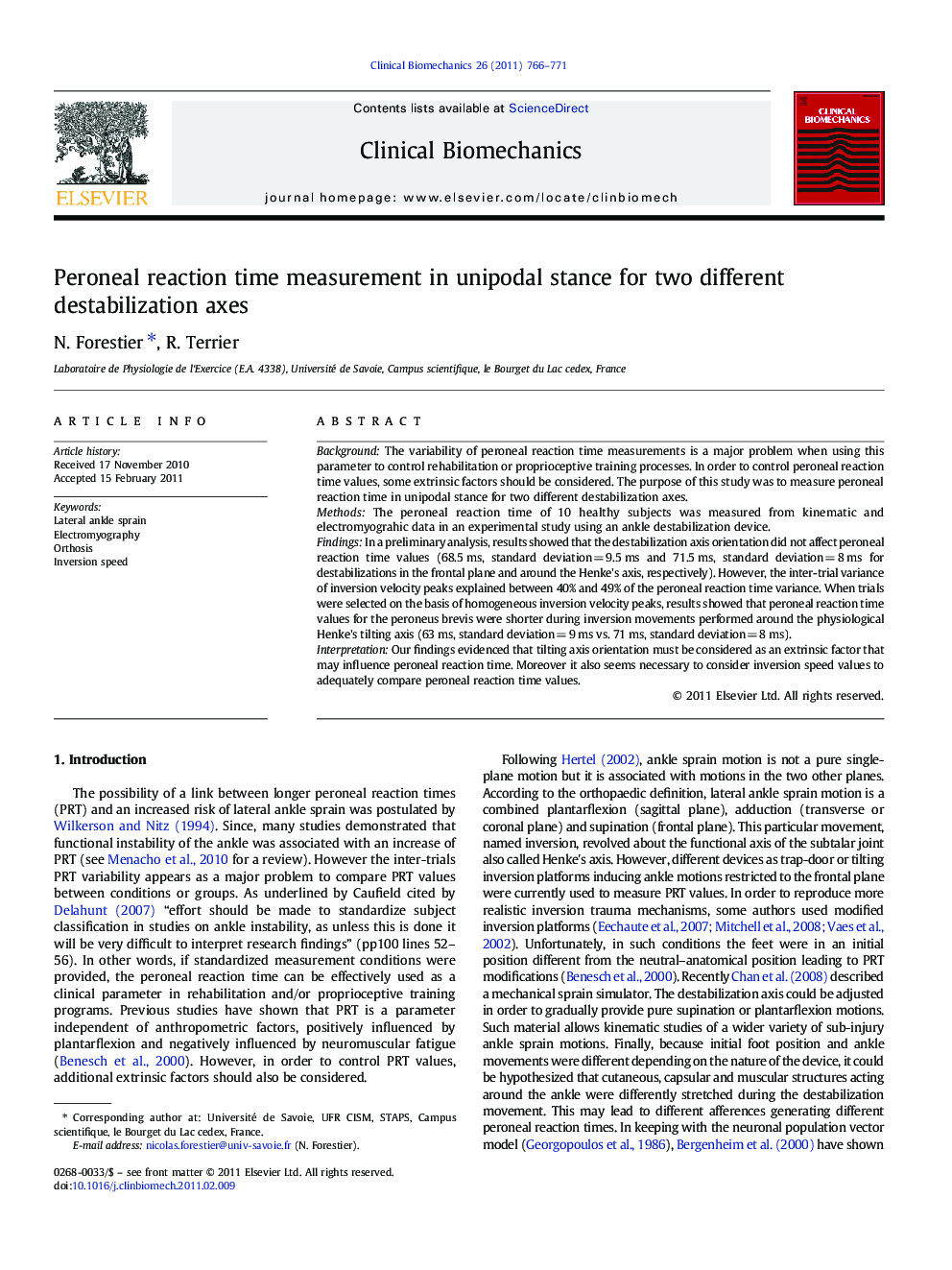| Article ID | Journal | Published Year | Pages | File Type |
|---|---|---|---|---|
| 4050726 | Clinical Biomechanics | 2011 | 6 Pages |
BackgroundThe variability of peroneal reaction time measurements is a major problem when using this parameter to control rehabilitation or proprioceptive training processes. In order to control peroneal reaction time values, some extrinsic factors should be considered. The purpose of this study was to measure peroneal reaction time in unipodal stance for two different destabilization axes.MethodsThe peroneal reaction time of 10 healthy subjects was measured from kinematic and electromyograhic data in an experimental study using an ankle destabilization device.FindingsIn a preliminary analysis, results showed that the destabilization axis orientation did not affect peroneal reaction time values (68.5 ms, standard deviation = 9.5 ms and 71.5 ms, standard deviation = 8 ms for destabilizations in the frontal plane and around the Henke's axis, respectively). However, the inter-trial variance of inversion velocity peaks explained between 40% and 49% of the peroneal reaction time variance. When trials were selected on the basis of homogeneous inversion velocity peaks, results showed that peroneal reaction time values for the peroneus brevis were shorter during inversion movements performed around the physiological Henke's tilting axis (63 ms, standard deviation = 9 ms vs. 71 ms, standard deviation = 8 ms).InterpretationOur findings evidenced that tilting axis orientation must be considered as an extrinsic factor that may influence peroneal reaction time. Moreover it also seems necessary to consider inversion speed values to adequately compare peroneal reaction time values.
